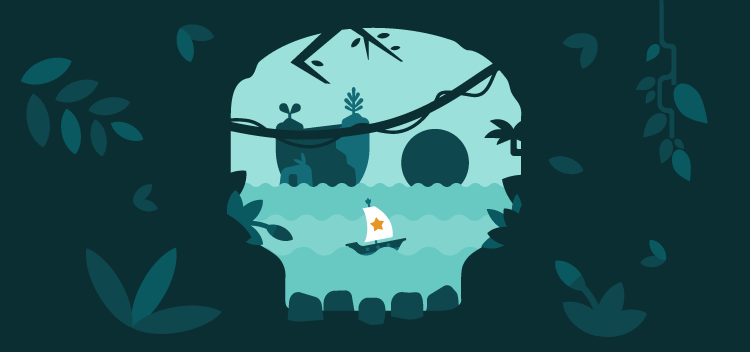
NEW Game Alert: Pirate Passage
Ahoy! Today, we’re excited to introduce the newest game from Lumosity: Pirate Passage! Can you navigate your ship to collect the treasure without running into any pirates? You’ll have to consider your route carefully: this Problem Solving game challenges planning, or your ability to think ahead, evaluate options, and choose the best course of action.
Some time ago, our Games team realized that our Problem Solving category seemed a bit thin, so they set out to develop new games to round out the Library. The Games Engineer behind Pirate Passage, Nick, explains, “We created an incubation group within the Games team and spent about three months coming up with as many Problem Solving game ideas as possible.”
The first idea? Pirate Passage — though, at the time, the team jokingly named it “Battleshapes.” “In particular, I was asked to think about spatial visualization and Problem Solving,” Nick says, “so I immediately thought of dodging things and creating a game around that.”
Once the incubation group had around 30 ideas, they voted on the top 10, and Pirate Passage made the cut. From there, the team presented their concepts to Lumosity’s Research Scientists, who weighed on which of the ideas could be best adapted to meet their standards for cognitive training.
Our Research Scientists are integral to game development at Lumosity: they research what neuropsychological tasks and assessments might work for a new game, then ensure that the Games Engineer’s interpretation of this research maintains the original task’s core mechanics designed to challenge a specific cognitive skill. Presented with the 10 new concepts for Problem Solving games, the Research Scientists recommended that the Games Engineers focus their efforts on three ideas — and, once again, Pirate Passage made the cut.
“But the Research Scientists still had some pretty specific requirements for the game,” Nick says. “Mainly, they asked me to ensure the game supports a range of difficulty. Can the levels become more complex? That’s a hallmark of all our games, so the first thing I did was build a level generator.”
Another hallmark of Lumosity games is design that enhances rather than clutters, and Nick worked closely with the Games Design team to ensure Pirate Passage’s look did just that. With higher levels featuring five pirate ships to dodge, the design needed to be simple enough to support the game’s increasing complexity without contributing to that difficulty. Nick ultimately took inspiration from an unlikely place: his commute!
“Basically, I thought we might be able to cut down on visual clutter by using a similar technique that the BART uses to visually represent the different train routes and stations,” he says.
(BART is San Francisco’s subway, for those readers who aren’t local.)
As for the game’s overall pirate theme?
“That was the first idea, and it’s one everyone wanted because the idea of treasure hunting and having to dodge pirates is something we thought was immediately compelling — from the get-go, there’s a narrative there that really reinforces what the game is challenging,” Nick explains. “We briefly considered a space theme, but I think we’re all happy we stuck with pirates in the end.”
Ready to try your hand at dodging pirates on the high seas? You can find Pirate Passage in the Games Library at Lumosity.com and on our mobile apps. Don’t forget: X marks the spot!
